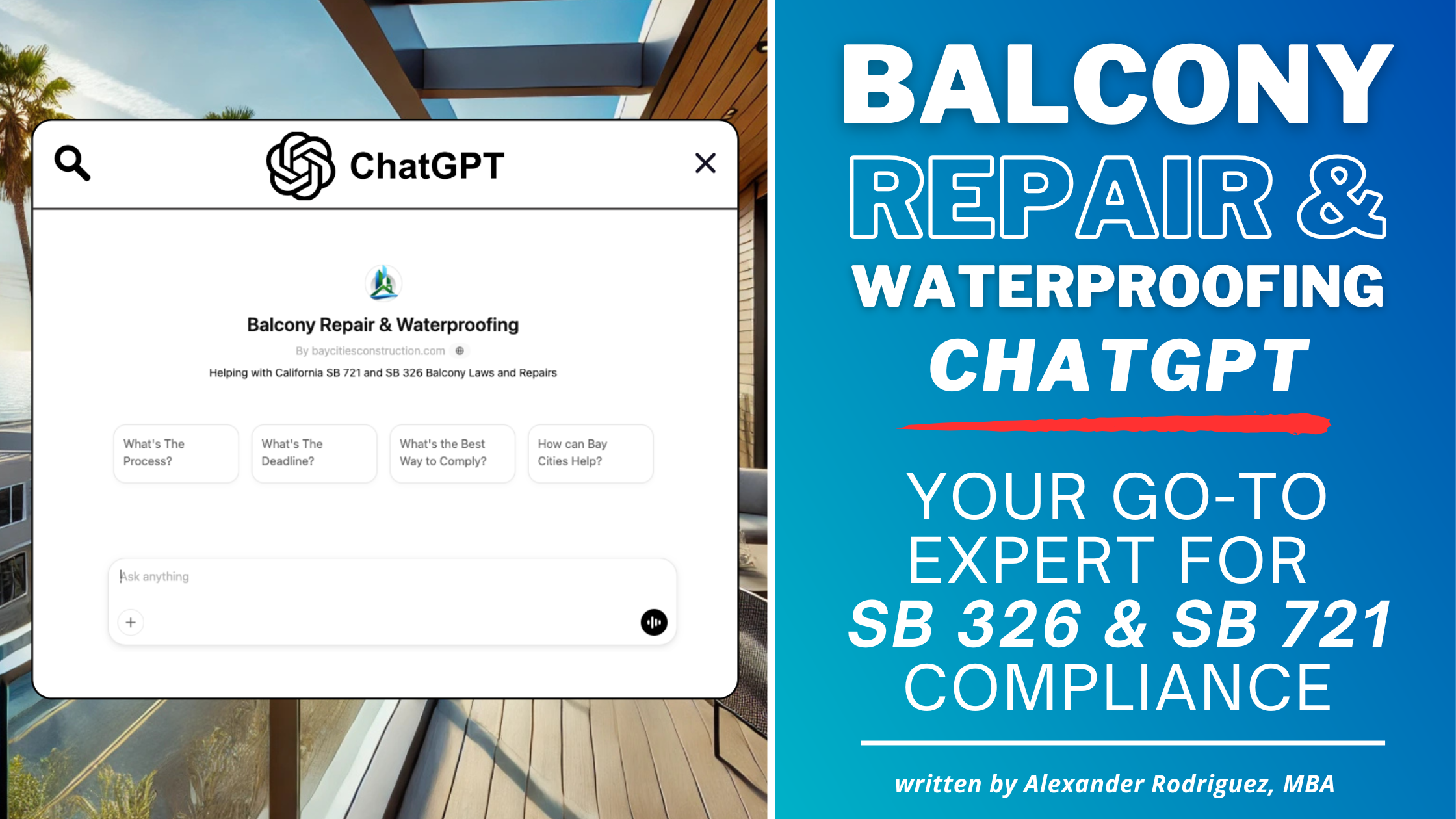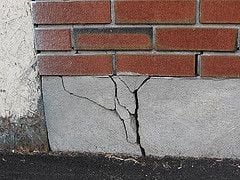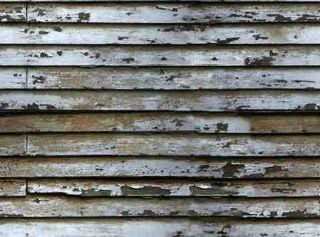Balcony Repair & Waterproofing ChatGPT: Your Compliance Assistant for SB 326 & SB 721
Why We Created Ultimate AI-Powered Balcony Repair & Waterproofing Chat {% video_player "embed_player" overrideable=False, type='hsvideo2',...
Most homeowners in Pacific Palisades didn’t expect to become experts in fire recovery. But after the wildfire, your insurance adjuster, city inspectors, and contractors will use two different words: restoration and repair. They are not interchangeable. One focuses on making your home safe and livable again, the other on rebuilding to modern codes. Misunderstanding the difference can cost you months of time and tens of thousands of dollars in missed insurance coverage.
Wildfires to neighborhoods create two jobs, not one. First is restoration to make the home clean, dry, and safe. Second is repair and reconstruction to replace what cannot be saved and bring everything to current code. Most projects need both in that order.
Fire damage restoration is the mitigation phase focused on health and safety, assessment, containment, smoke and soot removal, water extraction and drying, odor control, indoor air quality measures, and verification before re‑occupancy.
Fire damage repair and reconstruction is the building phase focused on structure and systems, selective demolition, framing, roofing, windows and doors, insulation and drywall, electrical, plumbing, HVAC, finishes, and required code upgrades under permits and inspections.
What Is Fire Damage Restoration and How Is It Different From Repairs
Restoration comes immediately after the fire is out. The goal is to stabilize the property, salvage what’s possible, and prevent further damage.
Emergency board-up and tarping to secure the property.
Water removal & drying: Firefighting water can saturate walls, floors, and insulation. If not removed, mold sets in within 48–72 hours.
Soot and smoke removal: Different residues require different methods:
Dry soot = fine powder, removable with HEPA vacuuming.
Wet or oily soot = sticky and corrosive, needs alkaline cleaners.
Protein residues = invisible but odorous, requires specialized cleaning.
HVAC cleaning: Ductwork often spreads soot through the home.
Air quality management: Negative air machines, HEPA air scrubbers, and hydroxyl generators reduce contamination.
Odor removal: Not just spraying, professional deodorization neutralizes particles at the molecular level.
Environmental testing: Increasingly required in wildfire zones before re-occupancy to prove IAQ is safe.
If you skip this step and go straight to rebuilding, you risk sealing soot, smoke, and water damage into new walls. That leads to odors, corrosion, and health problems which can void insurance coverage.
Painting over smoke staining instead of removing residue
Delaying structural drying after firefighting water
Running the HVAC without cleaning ducts and filters
Starting demolition before containment is in place
Contents triage: soft goods (textiles, rugs), electronics and appliances, furniture, documents and photos, and specialty items (art, instruments) are evaluated for cleanability and economic feasibility.
Chain of custody: inventory, pack-out, offsite cleaning, and storage prevent cross-contamination and loss.
Total loss vs. salvage: items with heat deformation, heavy soot infiltration, or lingering odor after cleaning are typically written as total loss for the claim.
Source removal first: visible soot and debris addressed before deodorization.
Air and surface checks: restoration isn’t “done” until a qualified professional confirms the cleanup goals (e.g., particulate reduction and odor control) are achieved so repairs don’t seal in contamination.
Work area turnover: once cleared, the site is handed to the repair team with containment plans to avoid re-contamination during demolition.
Once the home is clean, dry, and stable, the second phase begins: repair and rebuilding.
Demolition of non-salvageable materials: charred studs, drywall, compromised roofing.
Structural framing & roofing: replacing beams, trusses, rafters, and sheathing.
Mechanical, electrical, plumbing (MEP) systems: often require full replacement due to heat or water exposure.
Insulation & drywall: new materials installed after restoration clears contamination.
Windows, doors, and finishes: replaced to meet safety and energy codes.
Exterior work: siding, decks, balconies, and stucco often need replacement.
Selective demolition of non-salvageable materials with dust control and protection of cleaned areas.
Structural rebuild (framing, sheathing, roof), then MEP roughs (electrical, plumbing, HVAC), insulation and drywall, and finishes.
Inspection checkpoints happen throughout to verify safety and code conformance.
Pacific Palisades sits in a WUI (Wildland-Urban Interface) zone, which means stricter codes apply:
Class A fire-rated roofing only.
Tempered glass windows with fire-resistant frames.
Ember-resistant attic vents.
Non-combustible exterior materials in many cases.
Defensible space requirements (clearing brush, spacing vegetation).
Even if your home wasn’t originally built this way, once you repair or rebuild, LADBS requires upgrades to current standards. If you don’t have Ordinance or Law coverage on your policy, these costs may fall on you.
When assemblies are opened or systems are replaced, current building and energy codes apply.
Typical upgrades include fire-rated assemblies, tempered safety glazing, ember-resistant venting, smoke and CO alarms, and electrical and insulation updates.
Insurance angle: these costs may be covered under Ordinance or Law (code upgrade) coverage; ensure your estimate separates required code upgrades from like-kind repairs.
|
Restoration |
Repair/Reconstruction |
|
|
Goal |
Clean, decontaminate, stabilize, and save materials |
Replace/rebuild damaged materials and systems to current code |
|
Standards |
Professional fire and smoke restoration standards; health and IAQ guidance |
Building code, product/manufacturer standards, permitted work |
|
Typical Tasks |
Soot/smoke removal, drying, contents cleaning, deodorization, IAQ controls |
Demolition, framing, MEP, insulation/drywall, roofing, windows/doors, finishes |
|
Triggers |
Smoke/soot contamination, water from suppression, salvageable materials |
Char, structural compromise, delamination, persistent odor beyond economical restoration |
|
Timeline |
Often days to weeks, starts immediately to stop further damage |
Often weeks to months, depends on permits, scope, inspections |
|
Documentation |
Moisture maps, photo logs, contents inventory, cleanup verification |
Plans, permits, inspection sign‑offs, change orders, code‑upgrade documentation |
|
Insurance Scope |
Mitigation/restoration |
Repairs plus Ordinance or Law (code upgrades) when applicable |
|
Who Leads |
IICRC‑trained restoration team |
Licensed general contractor |
Soot and ash hazards: residues can be corrosive and irritating; avoid dry sweeping that re‑aerosolizes fine particles.
Protection in occupied areas: use containment, negative air, and HEPA filtration; keep children, older adults, and people with respiratory conditions away from active cleanup.
Worker safety: PPE and safe handling practices matter during both cleanup and demolition.
Re‑entry: only return to treated areas after the restoration team confirms cleanup goals; odors are a signal to reassess, not something to paint over.
Insurance companies often split claims into two scopes of work: restoration (mitigation) and repairs (construction). If you don’t have both properly documented:
You risk being underpaid.
You may lose out on code upgrade coverage.
Your insurer may approve cleaning when full replacement is needed — or vice versa.
💡 Tip: Always request separate line items for restoration vs. repair, and ask your contractor to document why certain materials cannot be restored.
Policies commonly include Additional Living Expenses (ALE) or loss of use
for reasonable costs while your home is uninhabitable. Track lodging, meals, laundry, extra commuting, and storage.
Once selective demolition begins, hidden damage often appears. Your contractor should submit supplements with photos, notes, and code citations so the claim reflects the actual scope.
You can generally choose your own licensed restoration firm or licensed contractor. Ask about certifications, scope documentation, and experience with insurance estimates, not just price.
The fire is out but the structure is still wet or contaminated with soot and smoke.
Materials are salvageable and need cleaning to prevent permanent damage.
Odor, corrosion, or mold could spread if not addressed right away.
Materials are charred, structurally compromised, or odor-locked beyond cleaning.
Opening walls or replacing systems will trigger code upgrades that must be completed before re-occupancy.
The restoration phase is complete and the home is cleared for safe rebuilding.
Secure the site and protect from weather
Assess and contain impacted areas
Restore first: remove soot and smoke, dry the structure, clean contents, control indoor air quality
Verify cleanup goals for air and surfaces
Then repair: rebuild under permits with required code upgrades
Final inspections and re-occupancy
Myths to avoid
“If it doesn’t smell, it’s clean.” → Odor can subside temporarily; residue may remain.
“Primer will block everything.” → Coatings don’t replace proper soot removal and drying.
“If walls look fine, they don’t need replacement.” → Smoke pathways and heat can compromise materials you can’t see.
Several factors influence how long fire recovery takes and how complex the project becomes:
Permits and inspection cadence drive schedule more than any single trade activity. Each stage of rebuilding, demolition, framing, electrical, plumbing, insulation, and finishes—requires approvals that can add time even when crews are ready to work.
Choosing the right team for fire damage work is as much about expertise as it is about process. These questions help you understand whether a contractor or restoration company is prepared to protect your home and document the work properly for insurance.
Key questions to ask
Which standard will you follow for fire and smoke cleanup
How will you prevent cross-contamination during demolition and repairs
What is your plan for indoor air quality protection and post-cleanup verification before repairs
How will code upgrades be identified and documented for the claim
Who handles permits and inspection scheduling
How will you document supplements for hidden damage once walls are opened
Do you perform both restoration and reconstruction, or do you subcontract one of them
How will you protect cleaned areas once repairs start
Red flags to watch for
🚩 Promises to “paint it and it will be fine” without actually removing residue
🚩 No plan for containment, negative air, or HEPA filtration
🚩 Unwilling to separate restoration vs repair in estimates
Some companies do both, but many specialize in only one. Restoration is usually performed by IICRC-certified crews, while reconstruction requires a licensed general contractor like Bay Cities Construction.
You may only need restoration. However, smoke residues can penetrate deep into materials, so insurance should still cover professional cleaning, testing, and air quality verification.
Painting or sealing over soot and smoke may trap contaminants. This often leads to odors returning, corrosion of hidden components, and long-term health hazards.
Restoration typically runs 1–3 weeks depending on severity. Repairs can last 3–12+ months depending on permitting cadence, scope of work, and required code upgrades.
Soot and ash particles are corrosive and can irritate lungs and eyes. Proper containment, HEPA filtration, and clearance testing are essential before anyone re-enters.
Yes. Pacific Palisades requires permits for demolition, framing, mechanical, electrical, plumbing, and final occupancy. Permit schedules are one of the main drivers of total rebuild time.
It’s common to uncover smoke pathways inside walls, framing weakened by heat, or water-related mold behind finishes. Contractors typically submit supplements with photos and code references for insurance approval.
Take photo and video evidence of all damage, create a contents inventory, save cleanup reports, and keep copies of permits and inspection approvals. This documentation strengthens your claim and avoids delays.

Why We Created Ultimate AI-Powered Balcony Repair & Waterproofing Chat {% video_player "embed_player" overrideable=False, type='hsvideo2',...

Living in the South Bay means your house is built on sand!

1 min read
The exterior of a house receives the most abuse. Abuse from elements and little critters. Knowing what to look for can save you thousands on home...